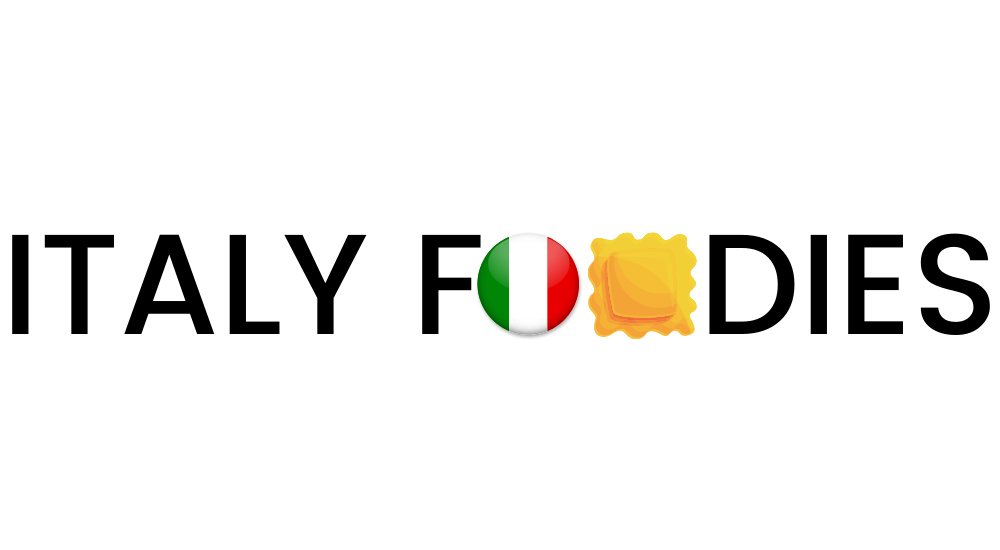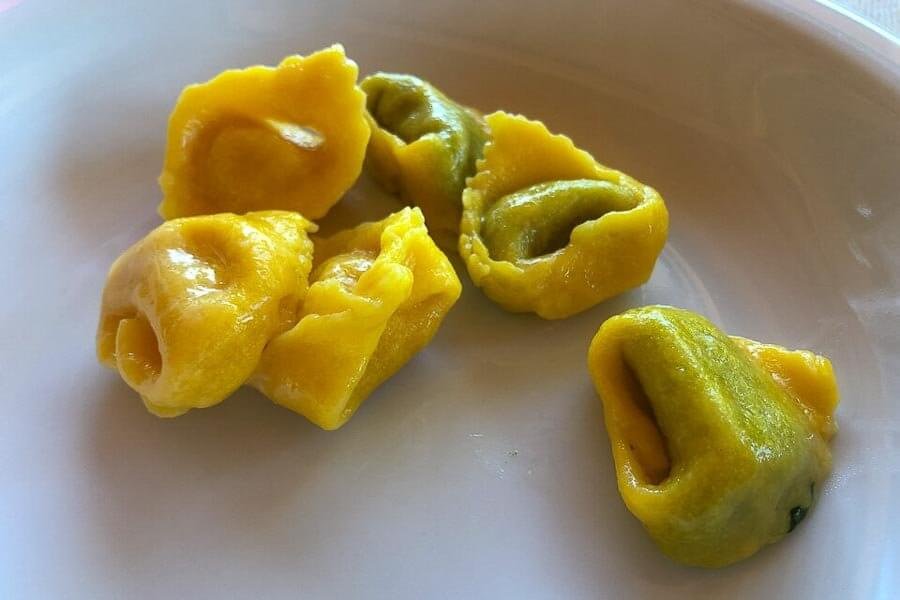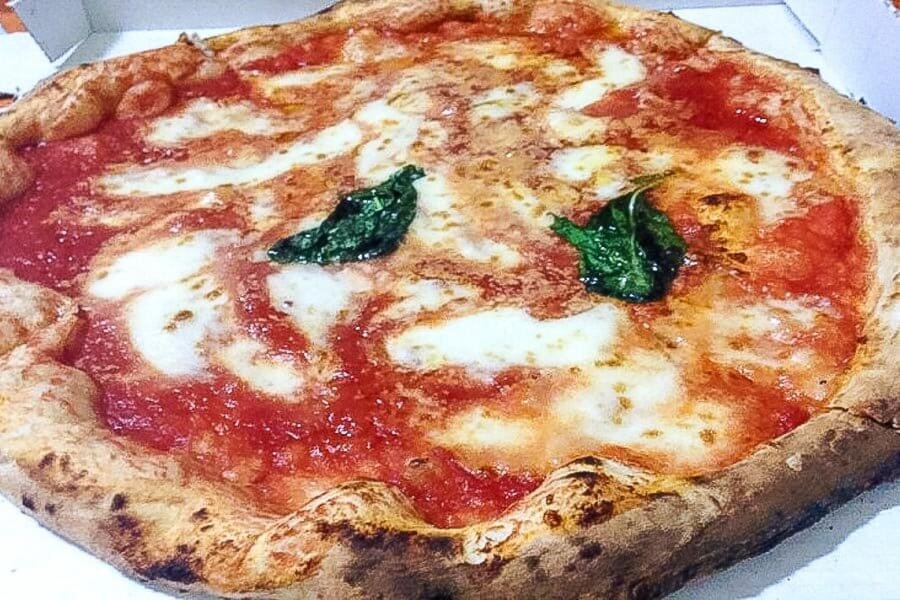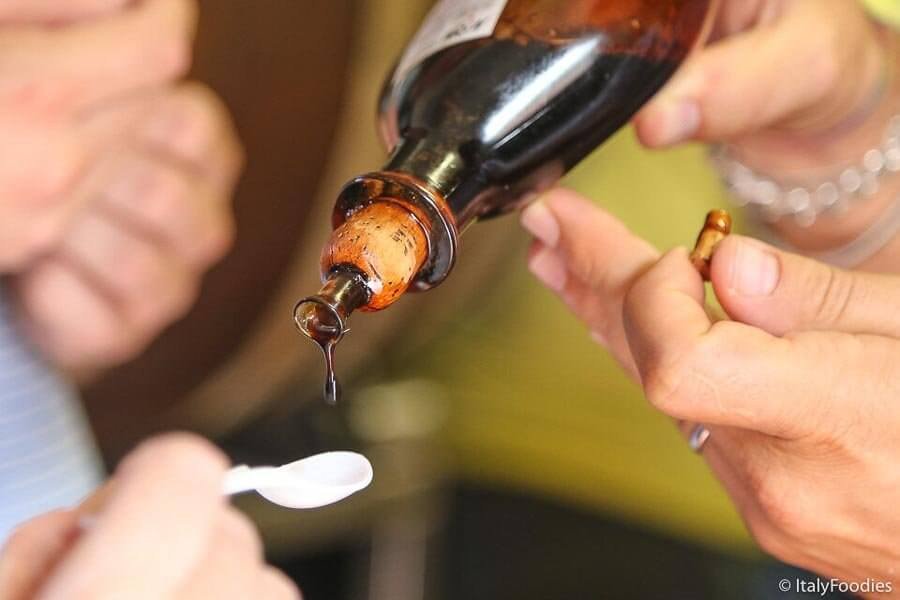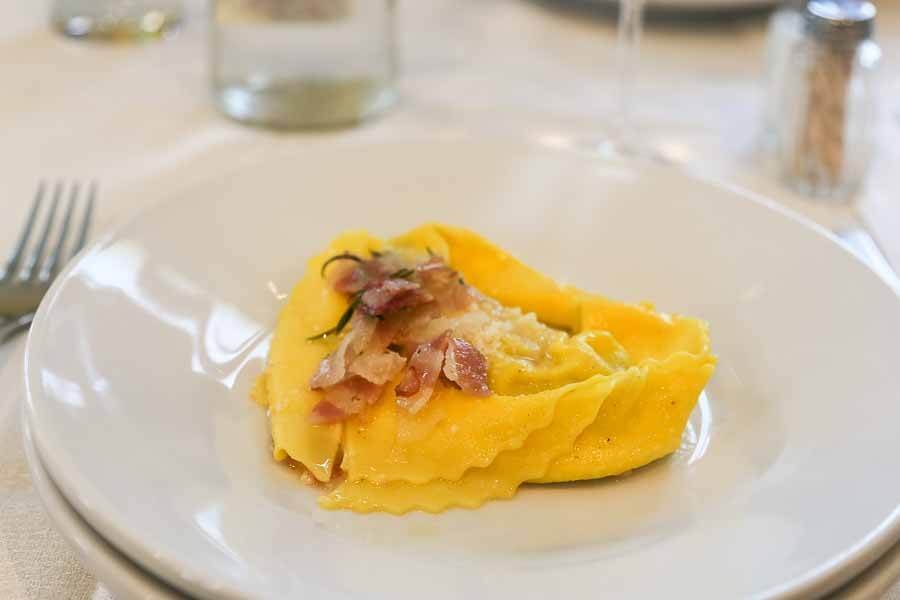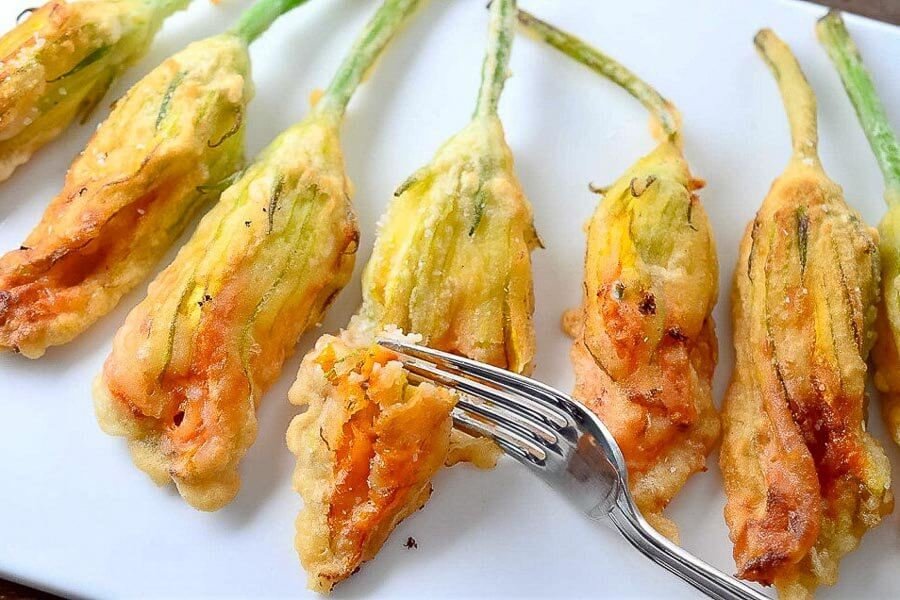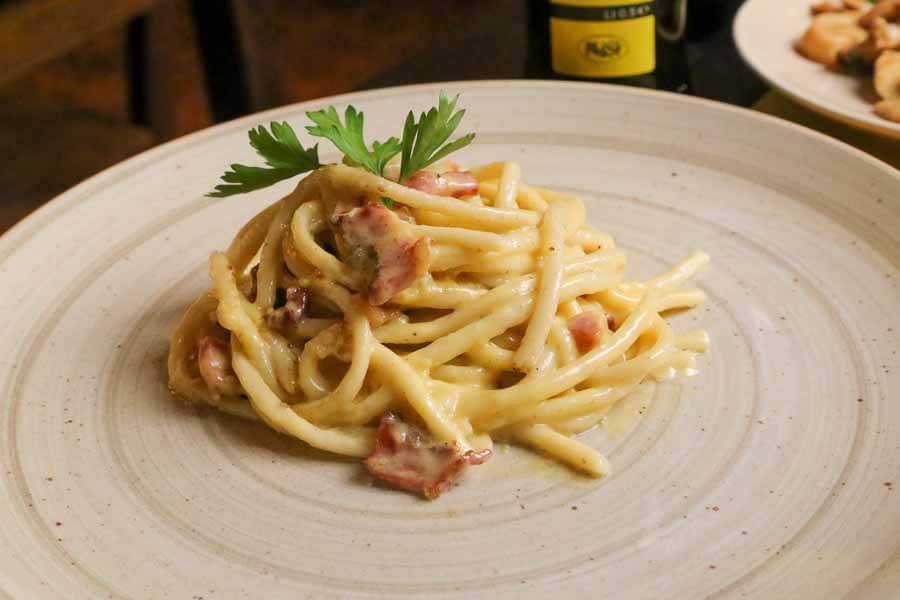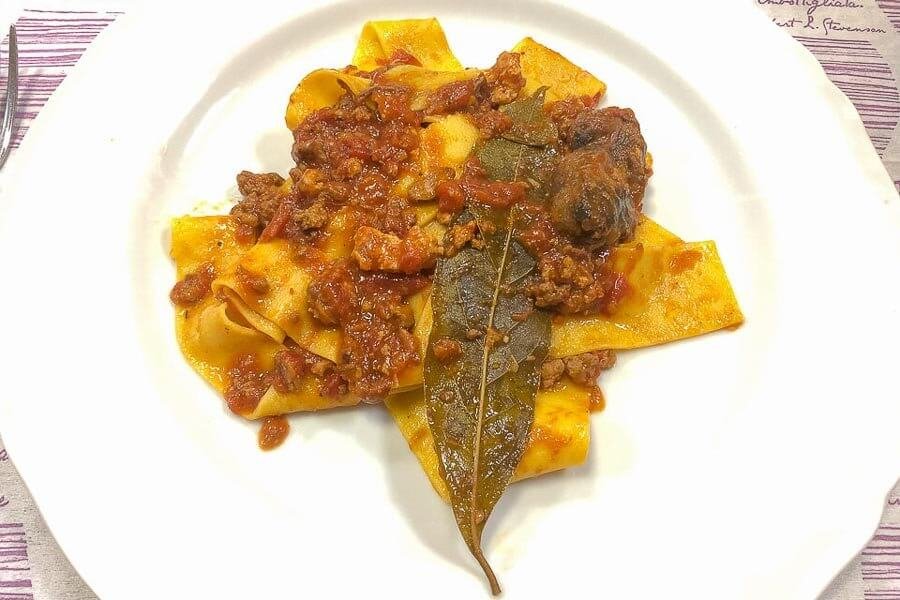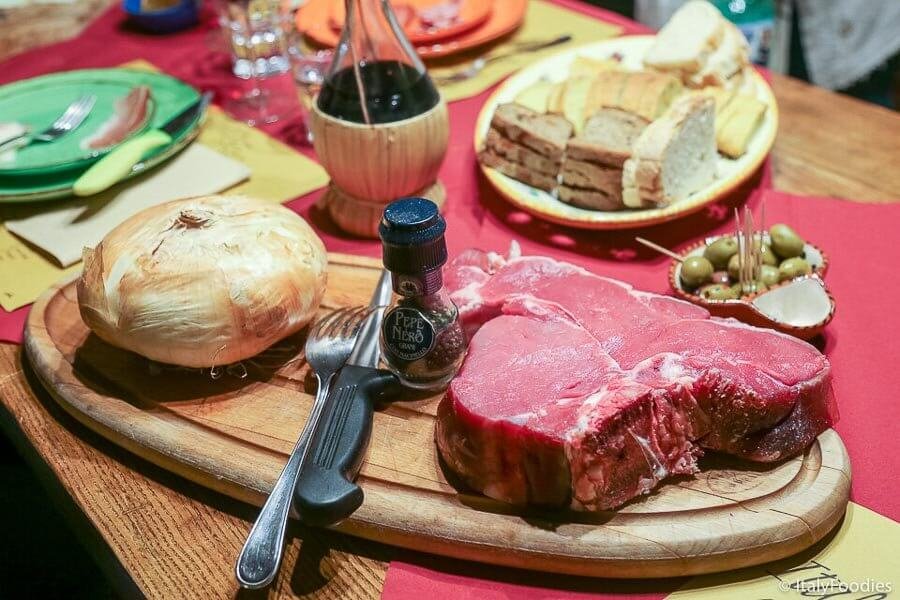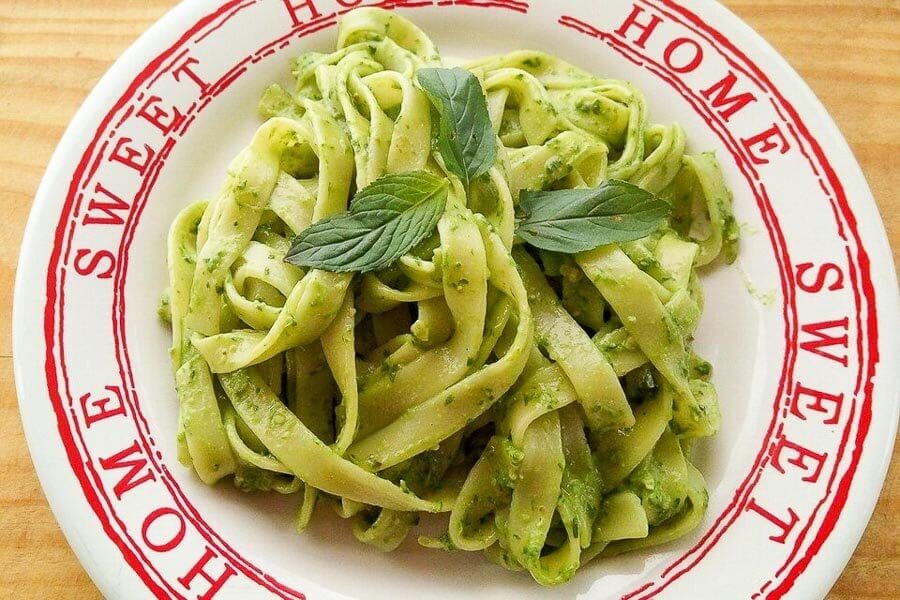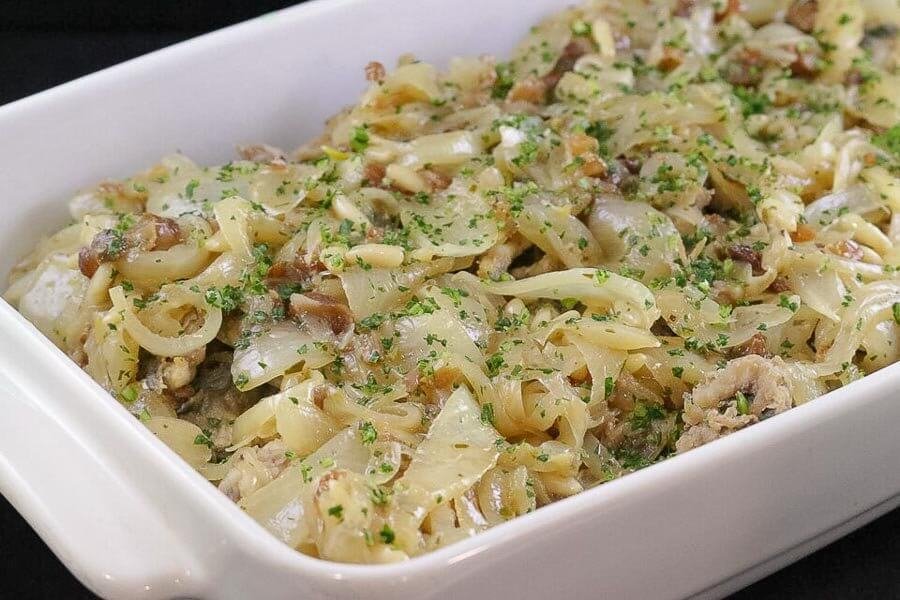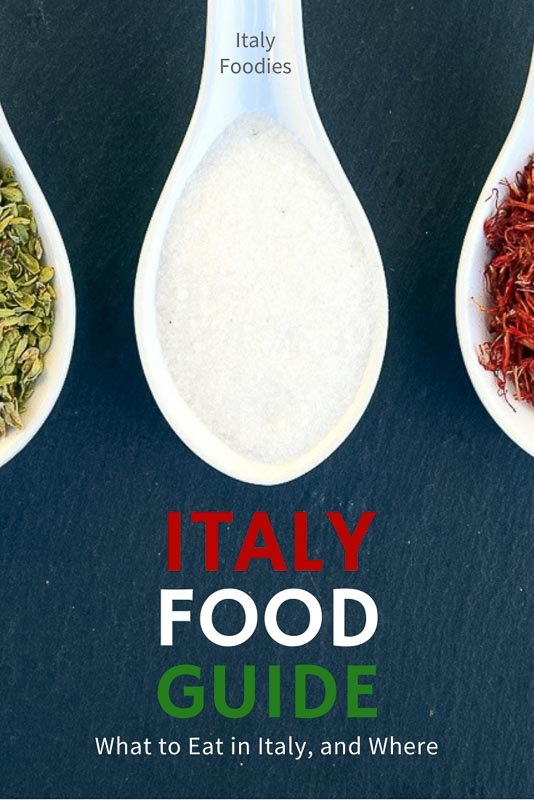Italian Food Guide: 26 Most Famous Traditional Foods In Italy
What exactly is typically Italian food? What are the most famous and traditional foods in Italy? These 26 regional Italian foods are a good place to start when you’re planning your trip to Italy!
Food is one of the sincerest expressions of a culture. It defines a region, reflecting the people, economy, their history and tradition.
Food and wine are a huge part of the travel experience for many of us and it is one of the things we most look forward to on our travels abroad.
Since our families hail from Italy, we’re more than partial to Italian food and love finding new and interesting versions of regional delicacies and indulging in some of Italy’s top food experiences.
So it’s only natural we write an Italy food guide about what to eat in Italy when you visit.
Here are the most iconic foods to eat in Italy, the best places to eat them, and the basics about regional Italian food.
This post may contain affiliate links. If you make a purchase through our links, we may earn a small commission, at no extra cost to you.
Table of Contents (click to jump ahead)
What Food is Typically Italian?
Italy Food Culture
Traditional Foods in Italy, and Where to Eat Them
Desserts in Italy, and Where to Try Them
What Food Is Typically Italian?
Pasta Ears? You Must Be in Puglia!
We always enjoy tasting the most popular foods in a region and finding the best examples of regional specialties when we travel. The flavors of a region can unlock so many secrets about its past, like who conquered the area, and what ingredients and influences they brought with them.
The shapes of pasta, traditional bread types, the kinds of cheeses crafted — it’s all speaks to the history of that region. You’ll also find many of these foods celebrated in Italy with their very own food festivals — sometimes a whole festival just for one food!
You may randomly select a box of pasta from the supermarket shelf in the United States, but when eaten in Italy, the shape of the pasta often tells you where you are.
If Pici is on your plate, you’re likely in Tuscany. Orecchiette (pasta ears) would probably put you near Puglia in the southern heel of the country’s boot. Or a hearty trio of Canederli dumplings on your plate and you’d be eating South Tyrolean food, in northern Italy’s alpine Trentino-Alto Adige region.
Lots of factors influence which seasonal produce, livestock (and the resulting cheese and meat), local game, and other Italy foods you’ll find through Italy’s regions.
On our recent trip to South Tyrol in northern Italy, we were surprised to find the culture is largely Germanic. Locals describe themselves as German-speaking Italians. Foods here are heavily influenced by Germany, Austria, and Hungary — impressively hearty dishes and desserts that tell the rich history of the region better than any guidebook.
The point is, there truly is no such thing as ‘typical’ Italian food. Instead, each region has its own distinct variations.
Food in Italy is highly regional and what’s typically Italian in one area might be a complete anomaly in another.
In some rural parts of the country, lack of infrastructure makes it so even villages close to one another are isolated, resulting in food cultures and traditional foods that are unique. It’s especially interesting to find such variations in recipes.
While we can’t say which food is the best to eat in Italy, different regions pride themselves on different dishes, and they’re all delicious.
Nervous About Visiting a Restaurant in Italy?
Read our Essential Italian Food Phrases Guide to help you order food in Italian!
Italy Food Culture
Trying the local food when you’re traveling is a great way to experience the local culture, whether it’s the food culture, coffee culture, or over some of the best street food in Italy. Eating local food or sharing an espresso with folks who call a place home is always social. That is the power of slow travel.
In Italy — as in many cultures — the act of cooking and eating is best shared in the company of friends and family.
If you want to see Italian food culture in the movies, watch Big Night with Tony Shaloub and Stanley Tucci, a movie that beautifully portrays how food is so intimately tied to Italian culture.
In Italy, food is life, and love, expressed in the pride of a region’s specialties and delicacies. And naturally — predictably — each region insists theirs is the very best!
The more we’ve traveled in Italy, the more questions we had like these:
Why are the sauces heavier in northern Italy?
The climate and Germanic food influences in the north lend themselves to heavier sauces. As you work your way to the warmer south, sauces become more tomato-based.
Why do Italians consume horse meat?
From the late 1800s until more recently, horse meat was widely consumed in Italy because it was inexpensive and rich in iron and nutrients, protecting people against anemia.
There’s so much seafood, where can I find a burger?
If you’re saying this, you’re probably in southern Italy. Fresh frutti del mare (seafood) abounds here and is part of a healthy Mediterranean diet.
As you travel from one Italian city to the next, the food will change along with the climate and geography. The ‘typical’ Italian food in Venice may not resemble what you will find in Sicily.
or even, what do Italians eat for breakfast?
The most common answer is pastry, to which, any foodie might swoon and think, smart Italians!
We’ve peeked into different corners of the country to see what the locals are eating and have savored some of the most popular Italian dishes.
If you love Italian food and travel, save this Italy food guide featuring 26 must-try regional favorites.
While we haven’t included espresso or sweets, expect dessert to be a no-brainer in the Italian diet.
Personally, we’re always on the hunt for the best gelato!
Pizza in Naples…..Is there anything better?
Traditional Foods in Italy, and Where to Eat Them
1. Pizza!
Best Place to Enjoy? Naples or Sorrento, and most anywhere in Campania
We believe that every good Italian food tour should start with…PIZZA! While the cuisine of Campania and Naples has many excellent traditional Italian dishes, they’re known throughout Italy for having the best pizza in the world.
Neapolitan style pizza is seriously like no other. It’s classic pizza Margherita with its thin flatbread-style crust cooked to perfection in a traditional brick oven.
Topped only with tomato sauce, whole basil leaves and buffalo mozzarella, it’s simple yet so delicious.
You can not visit Naples and not try pizza. Pizza in Naples is something you simply must add to your foodie bucket list!
2. Ribolitta
Best Place to Enjoy? Tuscan-style Ribolitta in Florence and Tuscany
Tuscan food is famous for rustic peasant soups that have helped them keep warm throughout the ages. In Italy, as in many cultures, scraps or leftovers may be thrown together in a traditional ‘scraps’ dish to use them up.
Ribolitta is the Tuscan version of a scraps soup. Seasonal veggies, cannellini beans, and crusty leftover bread combine to form this thick and hearty soup.
In fact, the bread is what thickens it. Whether it’s served for lunch or dinner, you’ll be tempted to swap the spoon for a fork!
3. Balsamic di Modena
Best Place to Enjoy? Bologna, Modena, and Emilia Romagna
Traditional Balsamic di Modena, is one of Italy's most famous regional foods. How much do we love balsamic? We could write a book!
True balsamic is produced by long-established local families in the Emilia Romagna region of Italy.
Production and finished products must adhere to a strict set of regulations know as ‘Protected Designation of Origin’, or DOP. Unlike ‘traditional’ fermented vinegar, true Balsamic di Modena is made from cooking grapes down to a juice that slowly concentrates over time in a series of wooden barrels called a batteria.
Aged anywhere from 3 years for IGP, 12+ years for DOP, or 25 years for the very finest nectar of the gods. There is simply no other food item like it.
With a price point around €1.000,00 per liter ($1232.00 USD), it is one of the most expensive products in the world.
True balsamic is smooth, silky, and surprisingly sweet — far from just a vinegar or condiment.
It even pairs well drizzled atop a plate of parmigiano reggiano cheese or gelato, or even on its own. It is one of the finest delicacies Italy has to offer!
Traditional Balsamic di Modena, is one of Italy's most famous regional foods.
4. Risotto
Best Place to Enjoy? Basilicata and Calabria for Risotto al Frutti del Mare (seafood); Venice and the Veneto for Risi e Bisi (Risotto with Peas); Milan for Risotto alla Milanese (with saffron); Campania for Risotto al Limone (with lemon).
Originating in northern Italy and the Veneto, this creamy rice dish made from short grain arborio rice and chicken, beef, or vegetable broth can now be found all throughout the country.
The rice and broth are slowly stirred over low heat until thick and creamy, and topped with Parmigiano Reggiano cheese, saffron, mushrooms, seafood, or herbs depending on whatever the dish is incorporating.
It can also be served as a meal on its own and should always be enjoyed hot.
Risotto is especially popular in Milan where saffron risotto is featured (Risotto Milanese). It’s also a typical dish in Venetian cuisine where you’ll find the famous dish called Risi e Bisi, or rice and peas.
In regions where porcini mushroom season is celebrated you’ll find Risotto with Wild Porcini Mushrooms flying off the menu.
Another variation (one of my faves) can be found in Naples and the Amalfi Coast — Risotto al Limone, with lemon. Delicioso!
5. Tortellini
Best Place to Enjoy? Emilia Romagna
This small ring-shaped pasta that resembles both a Bishop’s hat and a navel originates in Bologna and the Emilia Romagna region and can be stuffed with cheese or meat and served in a chicken or beef broth.
Tortellini in brodo is the most traditional Bolognese way to enjoy this stuffed pasta.
The medium-sized tortellini are called tortelloni. The largest size, usually around 3-4” across, is called tortellaci. All of them can be stuffed with cheese or a prosciutto mix. We’ve even had the pleasure of tasting some filled with wild boar… Yum!
6. Truffles
Best Place to Enjoy? Piedmont, Tuscany, Marche, Emilia Romania, Umbria
With their unique and hard-to-define flavor, it appears you’re either not a fan of Italian truffles or totally smitten with these earthy delicacies.
Experienced truffle hunters and their well-trained dogs (pigs are no longer allowed to participate) typically hunt for black truffles in the wild of several northern and central Italian regions. Piedmont, Marche, and Umbria are particularly known for this delicacy.
If you’re looking for a unique farm-to-table foodie experience, it’s possible to accompany a hunter and his dog as they forage through the forest.
Truffles may also be cultivated in orchards though this is not as common. Whether wild or cultivated it’s impossible to mistake the aroma and flavor when they’re thinly sliced over a plate.
The black truffle’s more expensive counterpart, the white truffle, is much less common. It’s preferred by gourmet chefs around the world for its more intense flavor but comes at a hefty cost.
At over €2500 (over $3000 USD) a kilo, the white truffle is the most expensive food item in the world.
7. Bottarga
Best Place to Enjoy? Sicily
This delicacy of salted and cured fish roe is typically harvested from tuna or grey mullet, but swordfish is sometimes used as well. The dried roe is sliced thinly over a plate in much the same way as truffles are grated as a condiment.
Although bottarga is a typical food found in Sicily and Sardinia, this dish has also made its way into the cuisine in southern Italy and parts of Tuscany.
With its intense flavor and slightly bitter aftertaste, this delicacy is not one for the faint of heart!
8. Squash Blossoms
Best Place to Enjoy? Sorrento, Naples, Amalfi Coast, and Campania
These bright orange flowers, dipped in batter and lightly fried, are stuffed with local cuisine and seasonal favorites. While we’ve enjoyed these delicacies all throughout Italy, our favorite variation was in Sorrento. Flowers were stuffed with an herbed, flavorful cheese that was oh so yummy!
No matter the preparation, squash blossoms are always delicious. Follow up with a small glass of limoncello for a meal you won’t soon forget.
9. Osso Buco
Best Place to Enjoy? Milan, Lombardy
This “bone with a hole” dish is a Lombardy region specialty and is traditionally made alla Milanese. With cross-cut veal shanks, vegetables, gremolata (a chopped herb mixture), white wine and broth, you can be sure it will stick to your ribs!
You’ll likely find it served with risotto or polenta, and it pairs nicely with a full-bodied red such as Chianti or Nobile di Montepulciano.
10. Polenta
Best Place to Enjoy? Trentino
Originating in northern Italy, this cornmeal porridge can now be found throughout the country.
While it’s traditionally topped with a ragu-style sauce and some grated cheese, you might also find it loaded with sautéed peppers and onions with sausage or sprinkled with gorgonzola cheese. It can also be served as a side or left to cool before being sliced and fried.
11. Carbonara
Best Place to Enjoy? Rome and Lazio
This hearty dish of egg, Pecorino Romano or Parmigiano Reggiano cheese, and pancetta originates in Rome, and is one of the typical Roman dishes you’ll find here.
Richer versions are prepared with guanciale (pork cheeks), and the pasta may be drizzled with olive oil and topped with garlic and flat leaf parsley. No matter the preparation, it’s almost always seasoned with plenty of black pepper.
While you’re at it, we recommend taking a food tour around the city, where it’s easy to eat your way to an Italian food nirvana.
With so much good food to enjoy, we could write an entire food guide just dedicated to Rome!
Creamy Spaghetti Carbonara in Roma
12. Ragù a la Bolognese
Best Place to Enjoy? Bologna and Emilia Romagna
Meat lovers can unite in this corner of the country where we were once asked by our server, “You’re not vegetarians are you? Because this is no place for that.”
Non-carnivores may want to skip this stop because Ragù alla Bolognese is one food you simply must try in Bologna.
Varying amounts of beef, pork, veal, and pancetta are combined to form the meat portion of the dish. It’s then browned with some garlic and olive oil before simmering with tomato paste, white wine, and milk.
In Bologna, the sauce is traditionally used to dress tagliatelle, pasta shaped into long, flat ribbons, though we’ve also had it with pappardelle closer to Tuscany (read our guide Tagliatelle vs Pappardelle if you want to know the difference between the two).
Pair the dish with an acidy Italian red such as Montepulciano d’Abruzzo or a Barbera Frizzante from Orsi – Vigneto San Vito for an unforgettable dining experience.
Tagliatelle with spinach, Ragù a la Bolognese
13. Sea Urchin
Best Place to Enjoy? Sardinia
These sea creatures are abundant in the warm coastal waters of Italy in places such as Positano, Capri, Sardinia, and the Amalfi coast.
When swimming in these areas, you’re better off staying high in the water to avoid falling victim to their sharp, stinging spines.
On the table, however, sea urchin roe is served atop spaghetti to create a local delicacy called Pasta con Polpa di Ricci.
Much like the sea, it has a slightly sweet, slightly salty and briny taste to it. Pair it with a crisp Italian white to offset the rich roe for a match made in heaven.
But why wait until dinner to enjoy it? This flavor combination makes for the perfect lunch on the coast of Italia.
14. Bistecca Fiorentina
Best Place to Enjoy? Tuscany
This Florentine-style steak comes from Chianina cows which are prized throughout Tuscany for their meat. A 2-inch T-bone or porterhouse steak is grilled to perfection atop blazing hot coals.
During roasting, a brush made from rosemary is used to coat the meat with olive oil. The steak is simply seasoned using only salt and pepper and served rare – a carnivore’s dream come true.
While you can ask for it slightly more well done, be prepared for some dirty looks.
If you feel like going all out, this dish pairs nicely with a Brunello di Montalcino. Bistecca Fiorentina is a hallmark of Tuscan cuisine and is truly as simple and delicious as it gets.
15. Pesto
Best Place to Enjoy? Genoa, Cinque Terre, Liguria
Pesto is one of the signature ingredients in the food of Liguria in northwest Italy, where fresh basil is abundant year round, particularly in the warmer months.
The simple sauce is made with varying amounts of basil, pignoli (pine) nuts, garlic, Parmigiano or pecorino cheese, olive oil, and salt and pepper.
The exact ratio of ingredients is usually left to taste and may vary significantly from place to place. Spinach or parsley can also be added to lessen the strong taste of basil and create a more complex palate.
Taste testing different versions of pesto throughout the towns of the Cinque Terre quickly became one of our favorite things to do, and we found some of the best at a local market near our Airbnb. Pint-size containers made it perfect for a quick meal.
We spread it on grilled crostini or toss it with warm pasta — we could eat pesto every night!
Fettucine with pesto Genovese
16. Lasagne al Forno
Best Place to Enjoy? Bologna and Emilia Romagna
A famous Italian dish, Lasagna (Lasagne is plural) is a wide, flat pasta with alternating layers of different fillings that vary by region, and al forno simply means oven baked.
In Campania, noodles are made with semolina and water and layered with sausage, ricotta, mozzarella, and Neapolitan ragu.
In the Emilia Romagna region of Italy, noodles traditionally made from flour, eggs, and spinach (Bolognese-style) are layered with ragu and creamy Bechamel sauce. We experienced this variation on our first trip to Bologna and it quickly became our favorite!
17. Focaccia
Best Place to Enjoy? Throughout Italy
This soft simple flatbread is similar to pizza dough – but lighter and more bread-like – and can be found all throughout Italy. It’s typically drizzled with olive oil and some salt and baked to perfection.
We’ve had many different variations throughout our travels, including focaccia topped with fresh herbs, green olives, and a few pieces of onion.
If we had to pick a favorite version so far, it might be the Schiacciata con l’uva – focaccia with grapes — we had on a vineyard walk in Tuscany. Made with newly harvested wine grapes, this common focaccia is a must-try.
Or maybe it’s traditional Focaccia alla Barese from Bari that’s so popular in Puglia’s food, made with beefy plump tomatoes the region is famous for. We can’t decide, but then again, there’s no need to!
18. Arancini
Best Place to Enjoy? Sicily and Rome
Arancini, or ‘little oranges’ are fried rice balls thought to have originated in Sicily. Arborio rice, commonly used in risotto, is cooked and shaped into a small ball, coated with breadcrumbs and placed in a deep fryer.
But that’s not all. The delicious snack is usually stuffed with mozzarella or fontina cheese or ragu meat sauce.
You might also find them filled with a mixture of ragu and peas, our personal favorite. While they’re also served in Rome, they go by a different name — Suppli. The variation here is usually filled with ragu and mozzarella.
Be careful not to ask for Arancini in Rome though, or you may be told to go back to Sicily!
No matter what you call it, you’re sure to love this Italian favorite.
19. Ragù di Cinghiale (Wild Boar)
Best Place to Enjoy? Umbria
Opinions as to which corner of the country has the best wild boar, Umbria or Tuscany, are mixed. While we’ve only experienced the Tuscan variety in a tasty ragu making it impossible for us to imagine having a bad version.
The highly prized meat is incredibly flavorful and comes to the table during the fall hunting season.
It’s delicious all on its own but can also be served atop a bed of pappardelle (ribbon-shaped pasta) or pici (Tuscan thick spaghetti-like pasta).
This is a true stick-to-your-ribs dish, and pairs well with a full-bodied Tuscan red. Enjoy!
Spaghetti with wild boar
20. Prosciutto
Best Place to Enjoy? Emilia Romagna
This dry-cured ham is most famously produced in Parma, but we’ve enjoyed it as much in Modena.
Only the finest products carry the designation of DOP (Protected Designation of Origin), and producers must adhere to a strict set of rules. Everything including how the pigs are raised is tightly regulated, and meat must be aged for a minimum of 14 months before it is checked by an inspector.
Strict yes, but we think you’ll agree this buttery smooth delicacy is well worth the wait.
21. Orecchiette Cime di Rapa
Best Place to Enjoy? Foggia and Ostuni, Puglia
This pasta is shaped to look like little ears and is still handmade in Apulia (Puglia).
The cup shape comes from spreading small discs of dough against a table. This makes it perfect for holding sauce, but orecchiette is commonly served with broccoli rabe in the region of Puglia. You’ll find this dish served in many Puglia restaurants most likely based on the way their Nonnas made it, with broccoli rabe, turnip greens or other greens.
This bitter green resembles broccolini more than typical broccoli and is a staple in the Mediterranean diet.
22. Parmigiano Reggiano
Best Place to Enjoy? Emilia Romagna
The “King of Cheese” is a must-try on your food tour, and one product we enjoy on every visit to Bologna.
Production is labor intensive and, because it falls under the DOP domain, every aspect is heavily regulated. DOP rules even govern what food the milk cows can eat.
Sink your teeth into the nutty, tangy goodness of the finished product though, and it’s clear why the rules are so strict. There is no other cheese like it!
Rounds must be stored and aged at least 12 months before being checked by a DOP inspector. Only when the wheels pass inspection may they be labeled DOP.
Take a look at a cheese wheel the next time you’re in an Italian deli. The large numbers printed on the side of the round signify the consortium where it was produced.
Wheels of DOP Parmigiano Reggiano cheese, a traditional Italian food
23. Cacio e Pepe
Best Place to Enjoy? Rome
Cacio e Pepe, or “cheese and pepper,” is a traditional pasta dish found all over Rome, but don’t be fooled by its simplicity. Creating something so elegant in taste and appearance with so few ingredients is no small feat.
The Romans manage to balance the flavors so excellently that the cheese is not overpowering, and the saltiness of the cheese works to complement the taste of pepper beautifully.
A long spaghetti-like egg pasta known as Tagliolini is usually used as the noodle, but Bucatini (hollow spaghetti, a personal favorite) may also be served. The pasta is adorned with a fine grating of Grana Padana or Pecorino cheese – yum!
Although tipping in Rome isn’t a common practice, if you find a restaurant that makes this dish well, be sure to leave one just to say Grazie!
24. Sarde in Saor
Best Place to Enjoy? Venice and Veneto
Sarde in Saor, a truly authentic Italian dish of broiled or fried sardines is the epitome of Venetian seafood.
The fish are mixed with raisins and pignoli nuts and topped with onions stewed in oil and vinegar. The vinegar base is followed by a hint of sweetness from the onions giving the recipe a sweet & sour quality.
The history and culture of Venice are woven into the fabric of this dish, which is best served cold or at room temperature.
Traditional Sarde en Soar in Venice
25. Bufala Mozzarella
Best Place to Enjoy? Salerno, Capri, Campania
Made from Italian water buffalo milk, this iconic cheese is native to Campania. Milk curds are stretched to form small balls which are often served in a salad with fresh basil and ripe tomatoes.
This colorful trio, boasting the red, white, and green of the Italian flag, is known as Insalata Caprese.
The foodie favorite is so popular that it can be found on practically every table in the region.
NOTE: Bufala mozzarella should not be confused with burrata, a ball of bufala mozzarella stuffed with cream and cheese curds that got its start in Puglia.
26. Pecorino Toscano
Best Place to Enjoy? Pienza, Tuscany
This sheep’s cheese has a milder taste than Pecorino Romano and is a Tuscan favorite. It can be enjoyed as a soft cheese when aged for one month or left to harden over time for a more intense flavor.
The exact taste and smell of the cheese can vary with the sheep’s diet at the time it’s made, but we have yet to meet a Pecorino Toscano we didn’t love!
Check out a cheesemaking tour & tasting for a unique farm-to-table experience.
Desserts in Italy, and Where to Find Them
You can’t dine in Italy and not finish your meal without some small sweet treat! Italians love their dessert, and thankfully prefer a small sweet bite or two at the end of the meal.
Compare that to the American sensibility which often prefers an entire dessert portion for one person. and that means a lot less calories and extra pounds you’ll have to carry home on you!
There are so many great desserts in Italy to look for but at the very least, here are four sweets favored by Italians from northern Italy to Sicily:
Strudel
Food in Northern Italy comes with a heavy German and Austrian influence and dessert is no exception. Apples are found everywhere and appear one of the world’s most famous desserts — apfelstrudel.
Look for interesting regional variations with unique presentations, spices used, or sauces and creams to accompany the dish.
Gelato
Nothing says sweet treat in Italy like gelato! It’s the ice creamy treat of Italy. Except it’s not.
So what’s the difference between ice cream and gelato? While both contain milk, cream, and sugar, authentic gelato uses more milk (or only milk) and less cream than ice cream, and generally does not use eggs or egg yolks, a common ingredient in ice cream.
However, there is a traditional egg yolk gelato in Italy and it’s delicious!
Egg gelato in Savigno, Emilia Romagna
Sfogliatelle
A sfogliatella is a shell-shaped filled Italian pastry native to Naples, Italy and the Campania region. The word sfogliatella or sfogliatelle with an ‘e’ means "small, thin leaf, or layer", as the pastry's texture resembles stacked leaves.
The pastry is filled with a ricotta-almond paste and can be found throughout Italy.
But in Naples, you’ll find Sfogliatelleria carts on just about every corner.
Cannoli
Cannolis are so beloved in southern Italy, and after the success of the Godfather movies which immortalized the famous line — “leave the gun, take the cannoli” — Americans have driven their pastry love straight back to the Old Country.
They’re made from tube-shaped shells of fried pastry dough filled with a sweet, creamy filling typically made with sweetened ricotta cheese, and often the open ends are sprinkled with candied citron, chocolate chips or cocoa powder.
Today, you’re likely to find cannoli throughout Italy, though they originated in the south near Sicily.
Always look for the unfilled shells, which can be filled fresh while you wait.
These are just some of the most iconic regional foods and desserts in Italy, but there are more…
We hope you try these delicacies at least once and find la buona forchetta (the good fork) on your culinary journey through Bella Italia!
